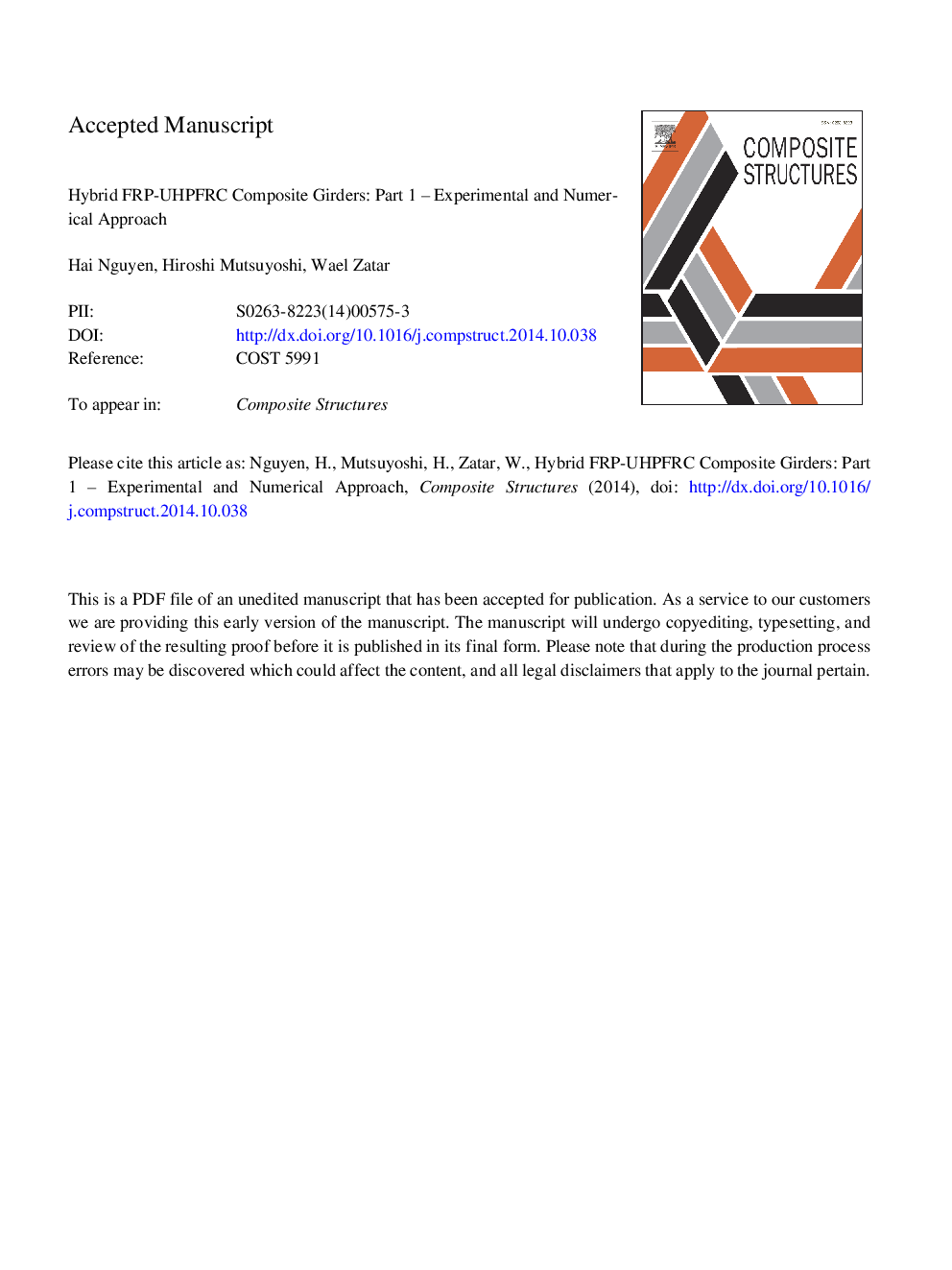| Article ID | Journal | Published Year | Pages | File Type |
|---|---|---|---|---|
| 6707063 | Composite Structures | 2015 | 61 Pages |
Abstract
This paper presents experimental testing and numerical analysis of durable composite girder systems consisting of hybrid carbon/glass fiber-reinforced polymer (HFRP) I-girders and precast ultra-high-performance fiber-reinforced concrete (UHPFRC) slabs. Epoxy adhesive and/or bolt shear connectors (SCs) were used to transfer horizontal shear forces from the UHPFRC slabs to the HFRP I-girders. Push-out tests were performed to evaluate the shear interaction at the slab/girder interface. The results of the push-out tests were used to design five large-scale composite girders. The experimental variables included two types of bolt SCs (straight and inclined bolt SCs) and different slab geometries. The composite behavior between the HFRP I-girder and the UHPFRC slab was examined. The test results showed that the combined use of the bolt SCs and the epoxy adhesive was essential to achieve a full interaction between the HFRP I-girder and the UHPFRC slab. The use of the epoxy adhesive resulted in improving the strength and stiffness of the composite girders, reducing the stress concentration around the bolt-holes, and increasing the shear strength of the bolt SCs. The girders with the inclined bolt SCs showed a more ductile behavior than those with the straight headed bolt SCs. A three-dimensional finite element (FE) analysis of the HFRP-UHPFRC composite girder was carried out that considered slip effects at the slab/girder interface and the nonlinear behavior of the bolt SCs. Comparisons between the experimental results and the FE analysis were performed and a fairly good agreement was found. A companion paper shows derivations of analytical equations to predict composite behaviors of the HFRP-UHPFRC girders with varying levels of interaction at the slab/girder interface.
Related Topics
Physical Sciences and Engineering
Engineering
Civil and Structural Engineering
Authors
Hai Nguyen, Hiroshi Mutsuyoshi, Wael Zatar,
